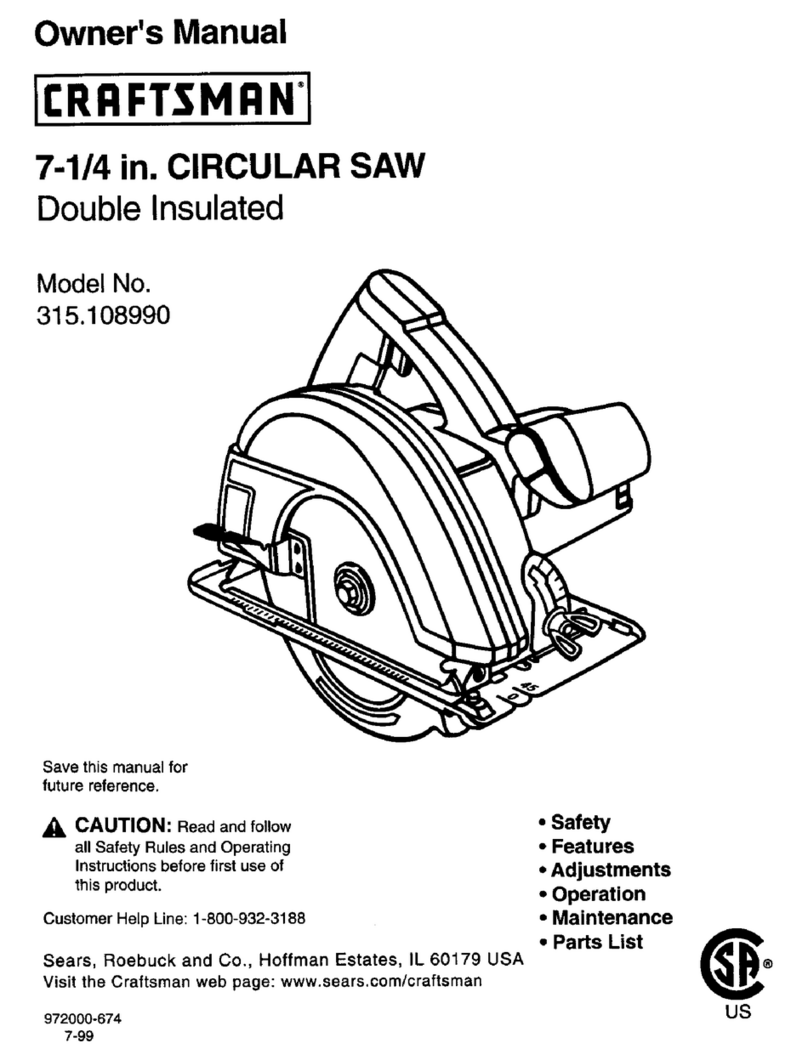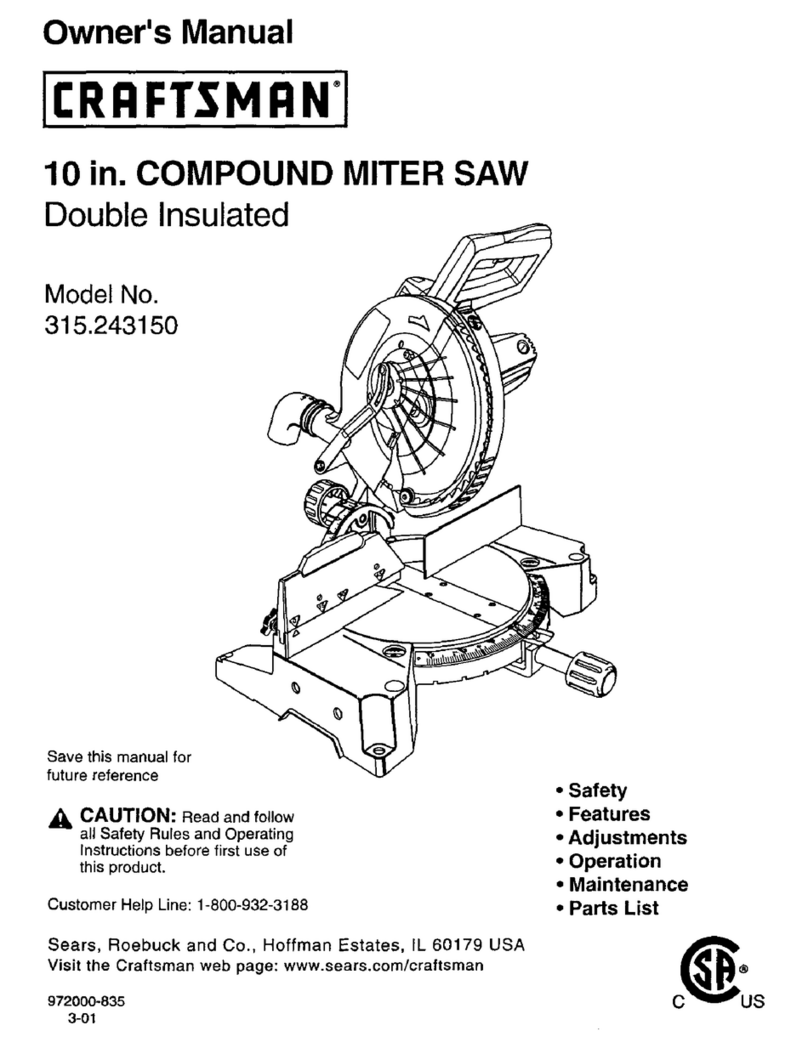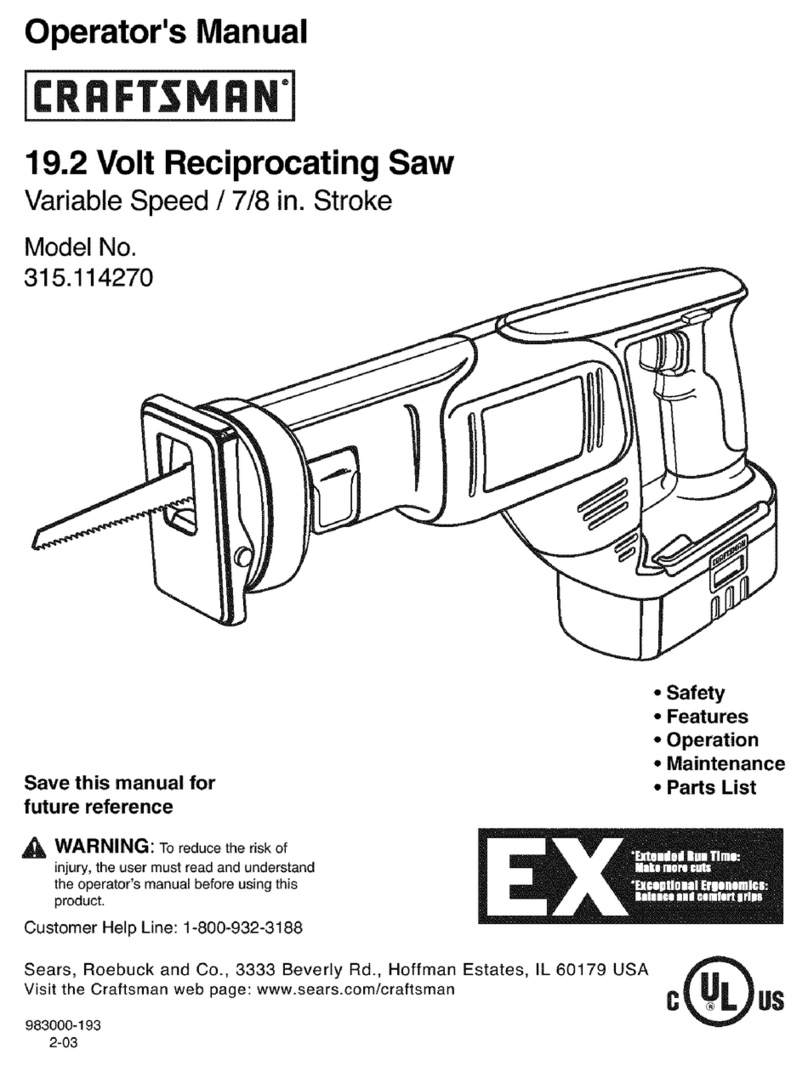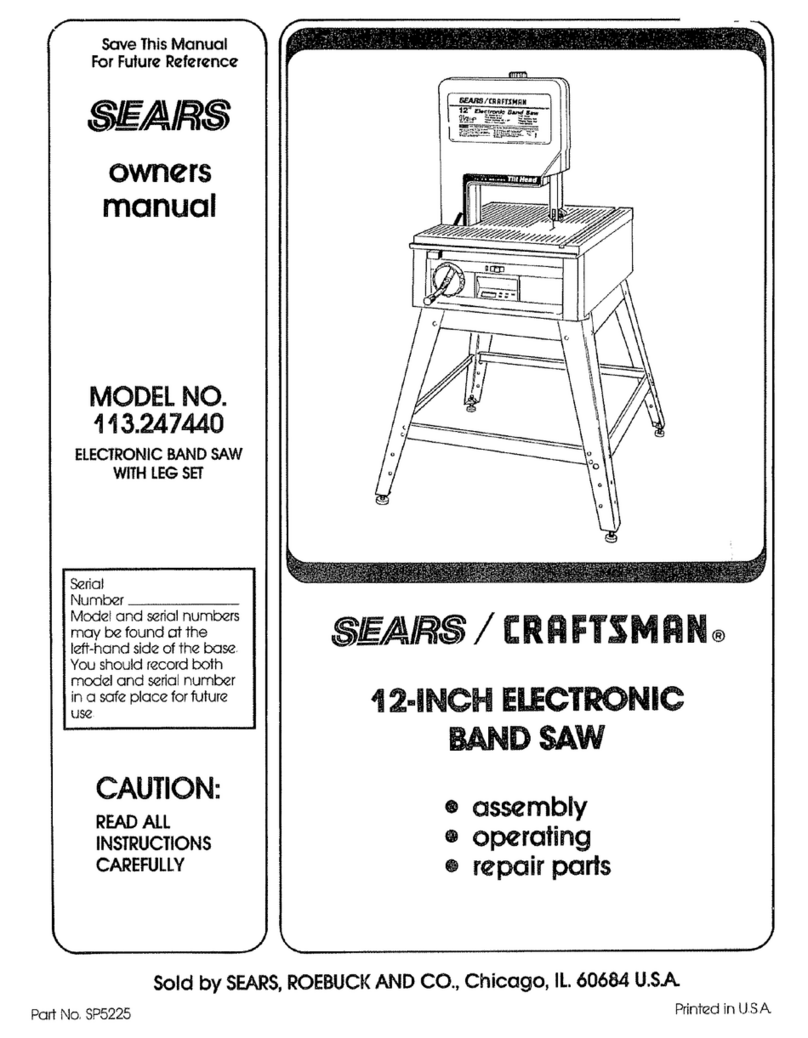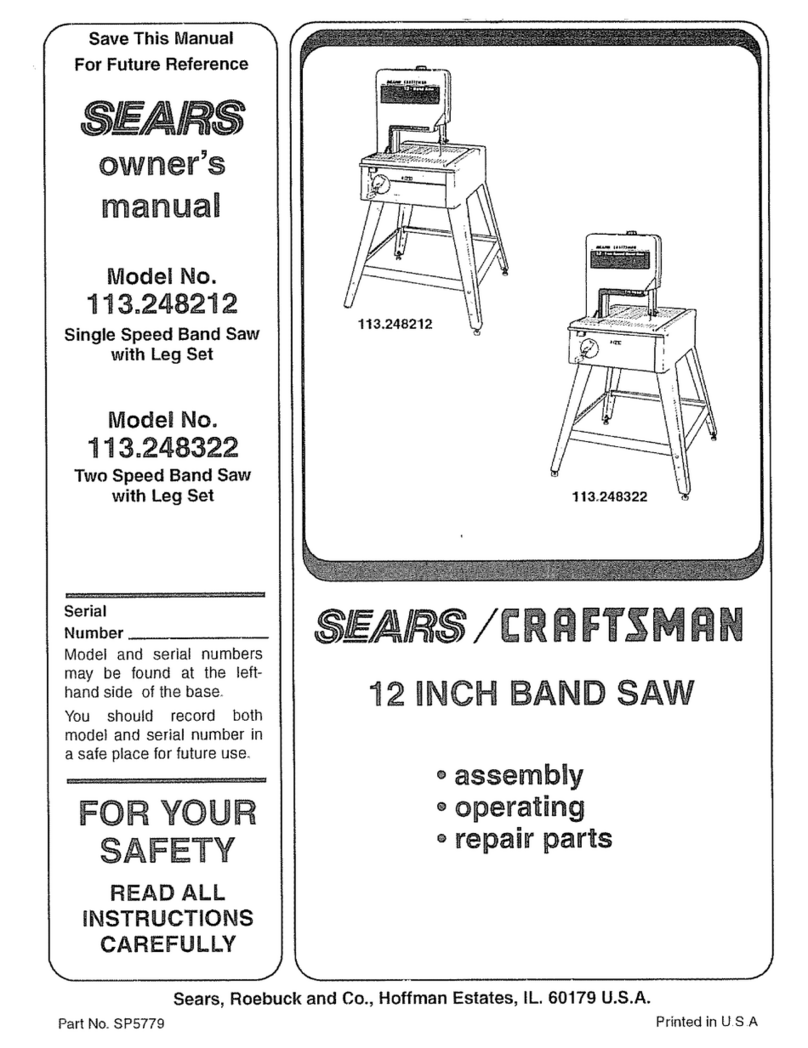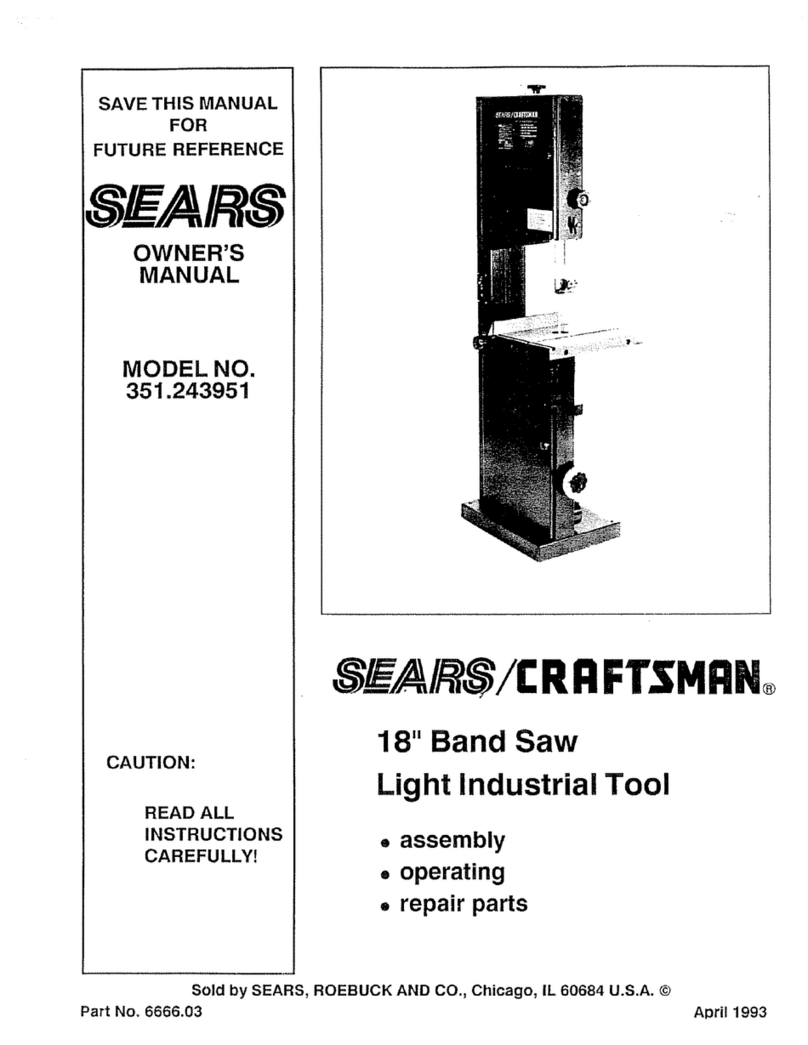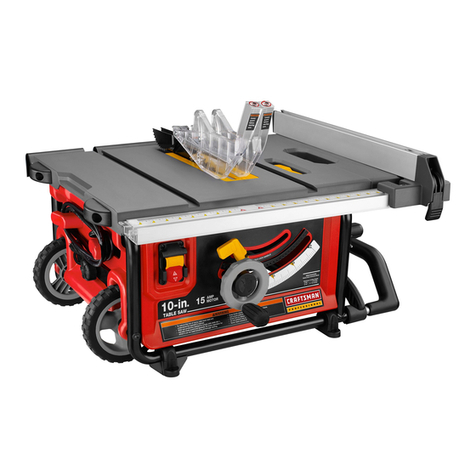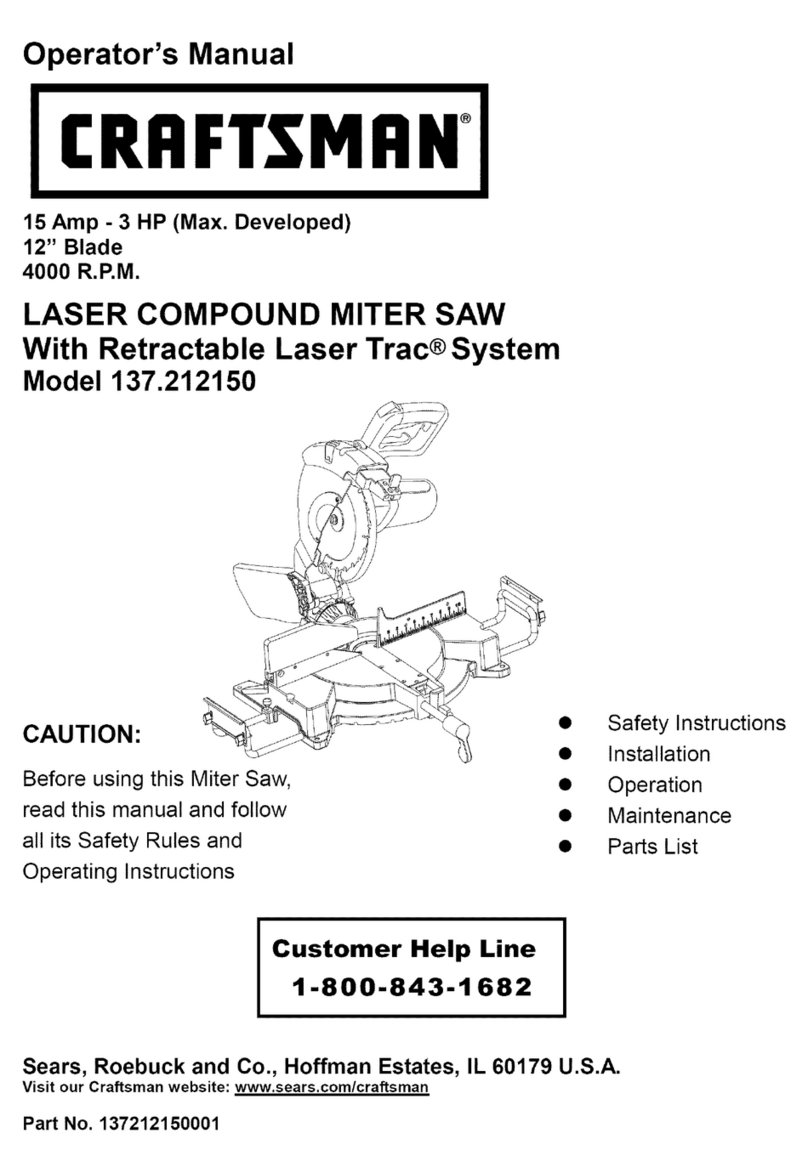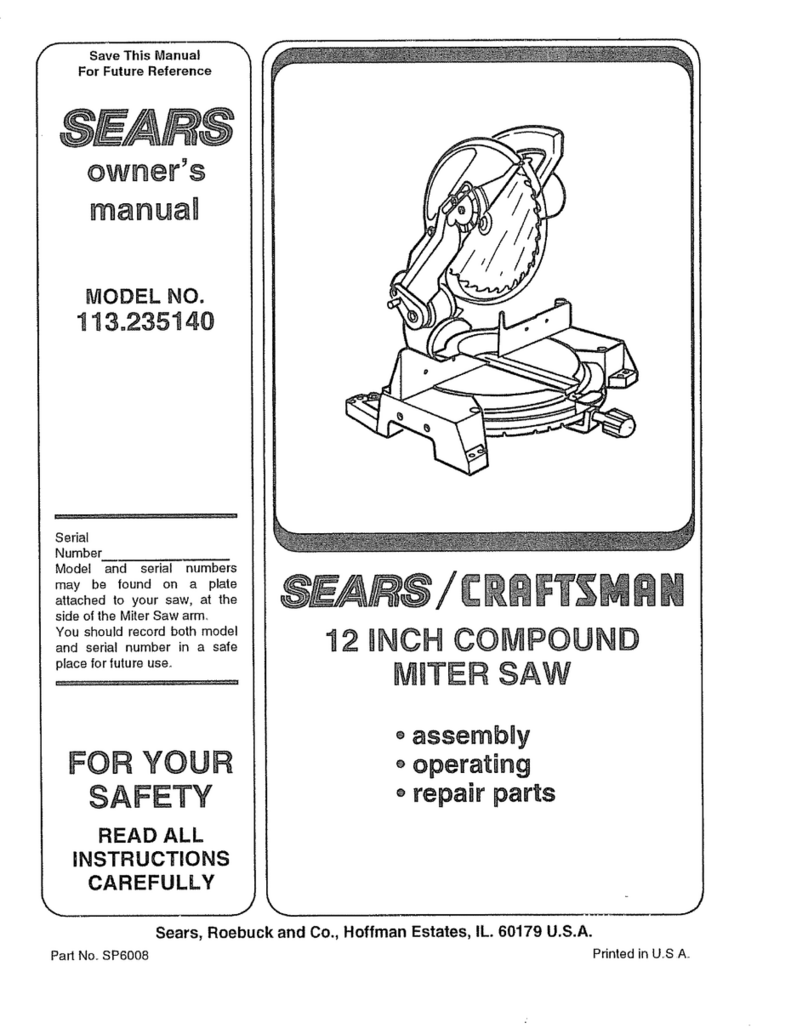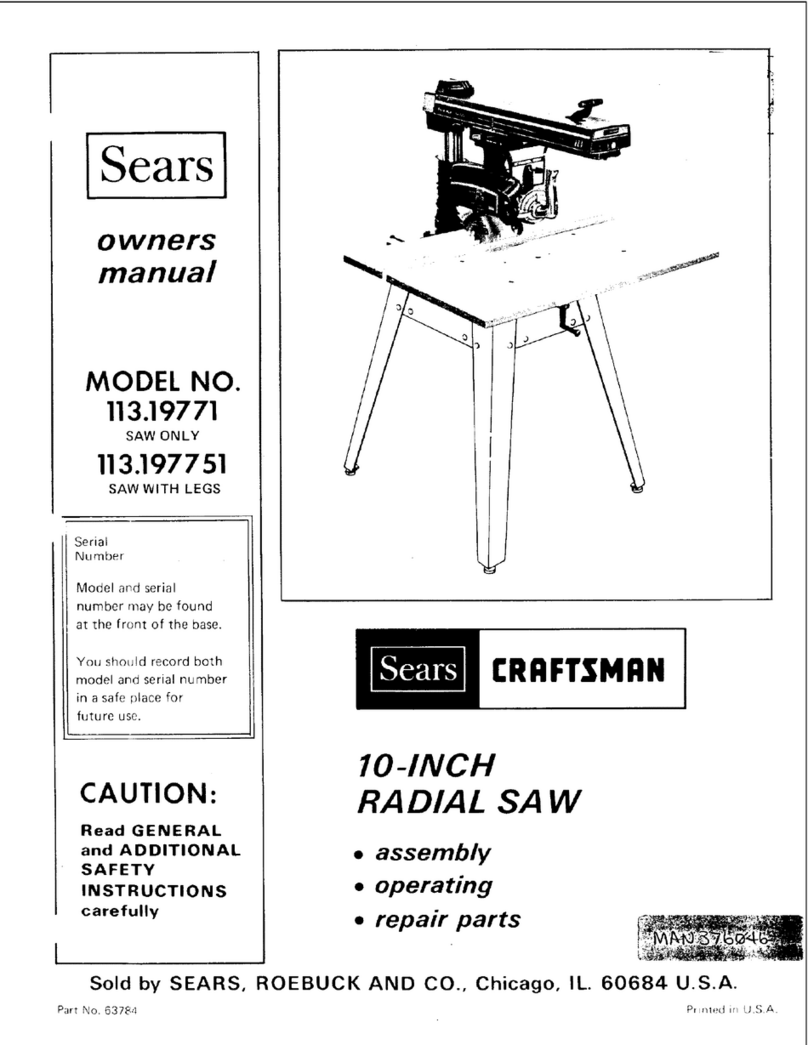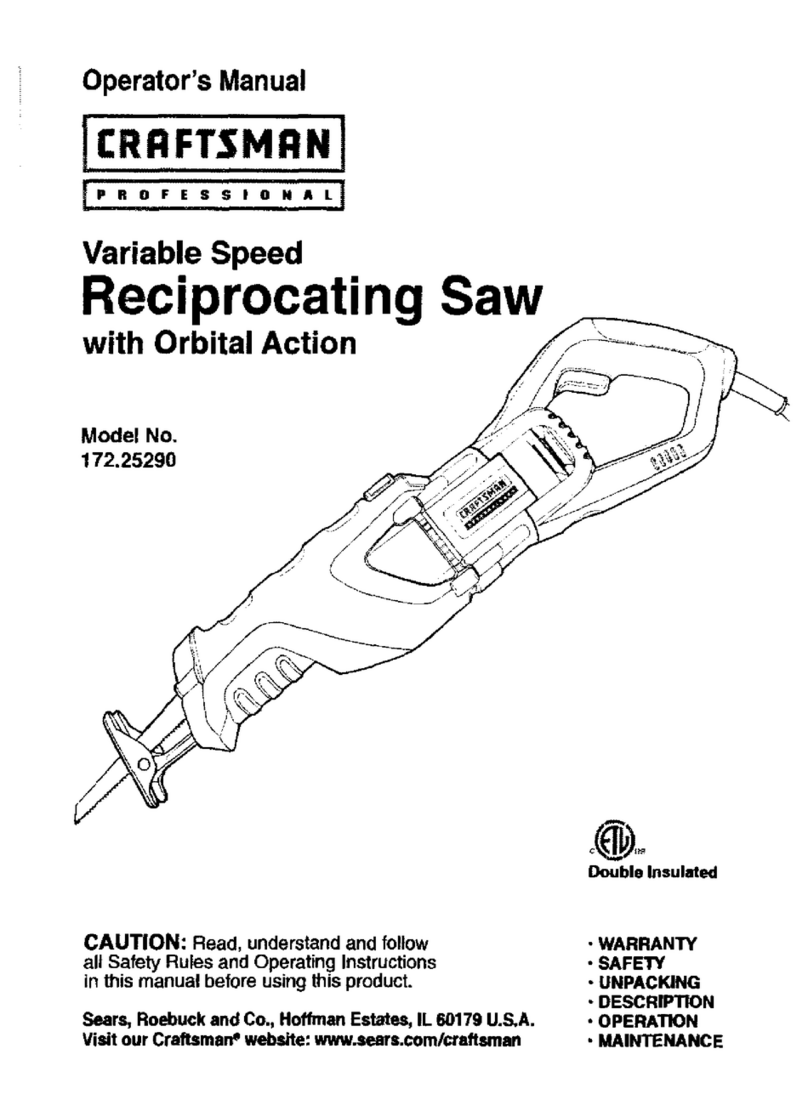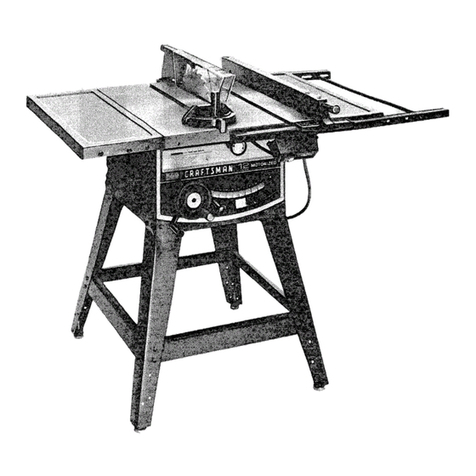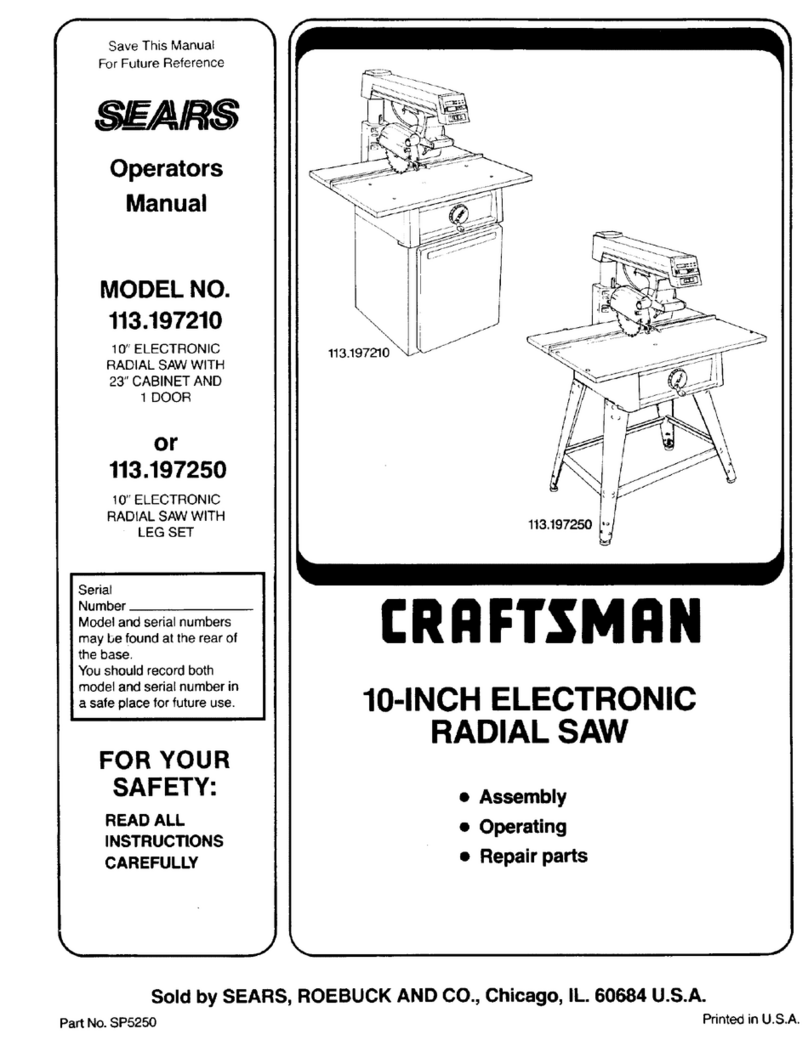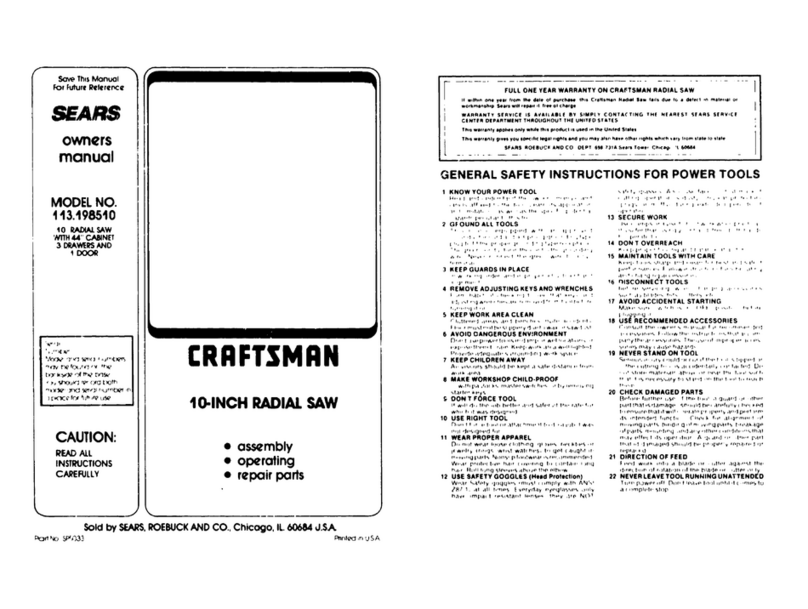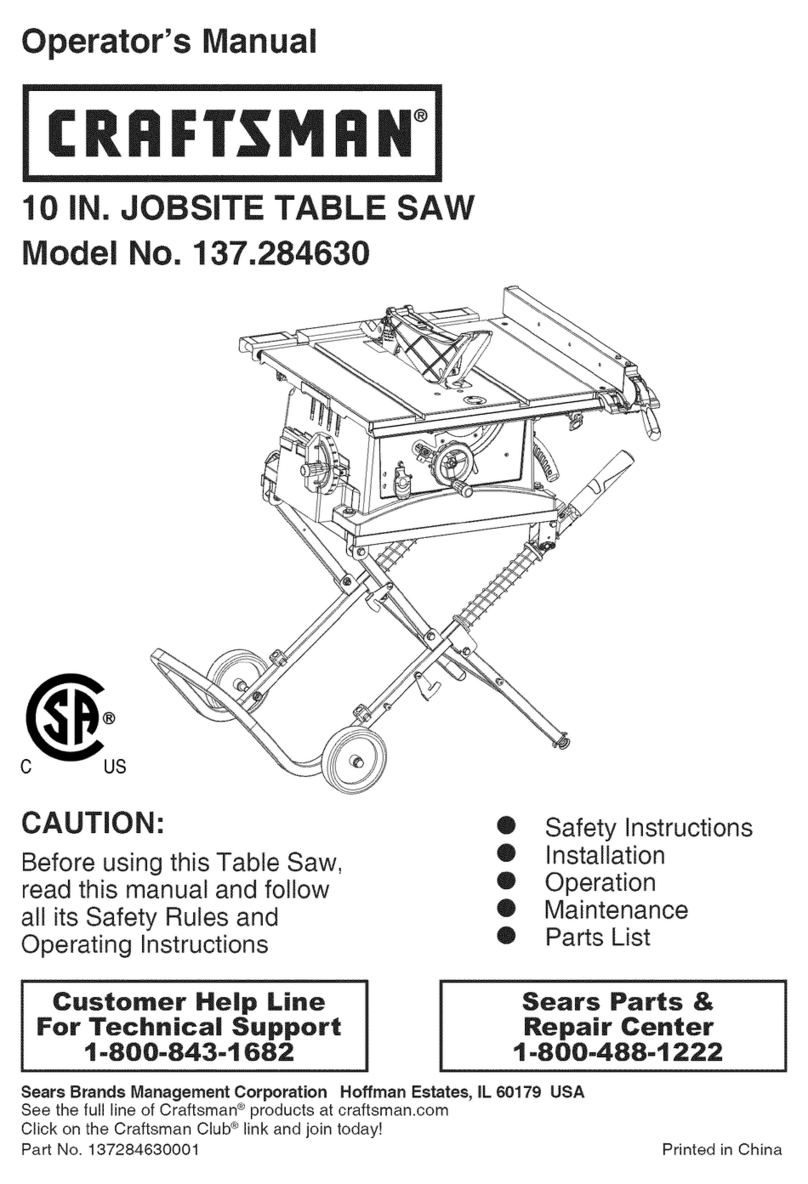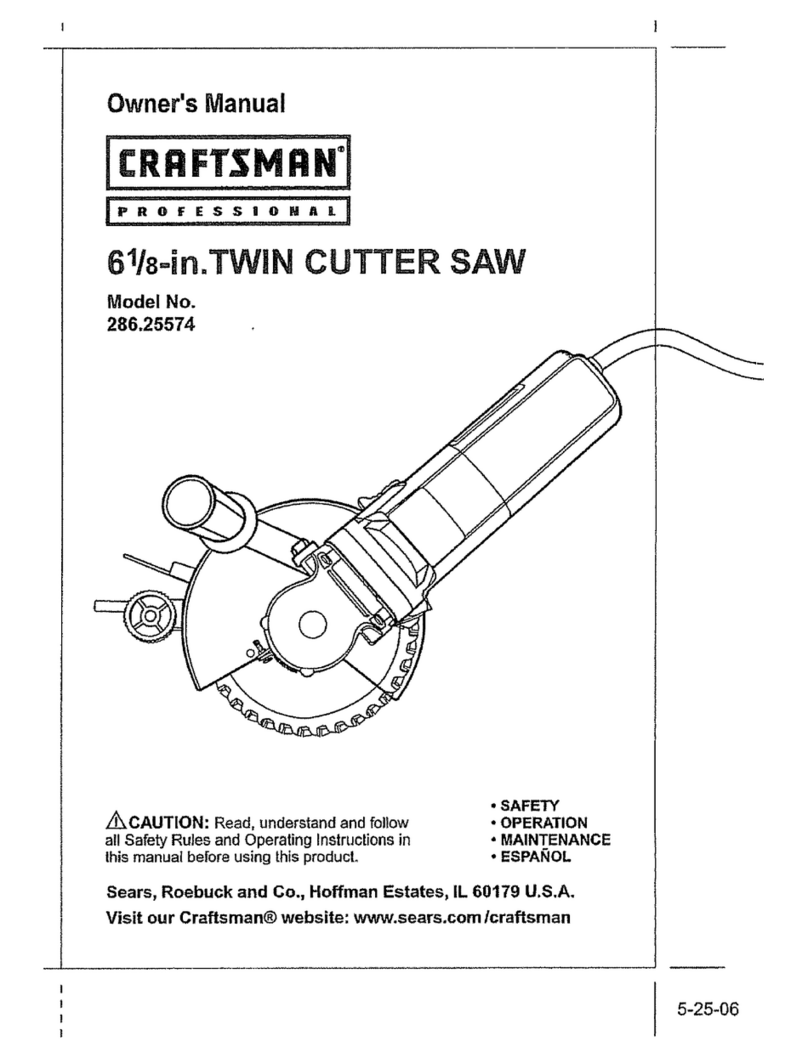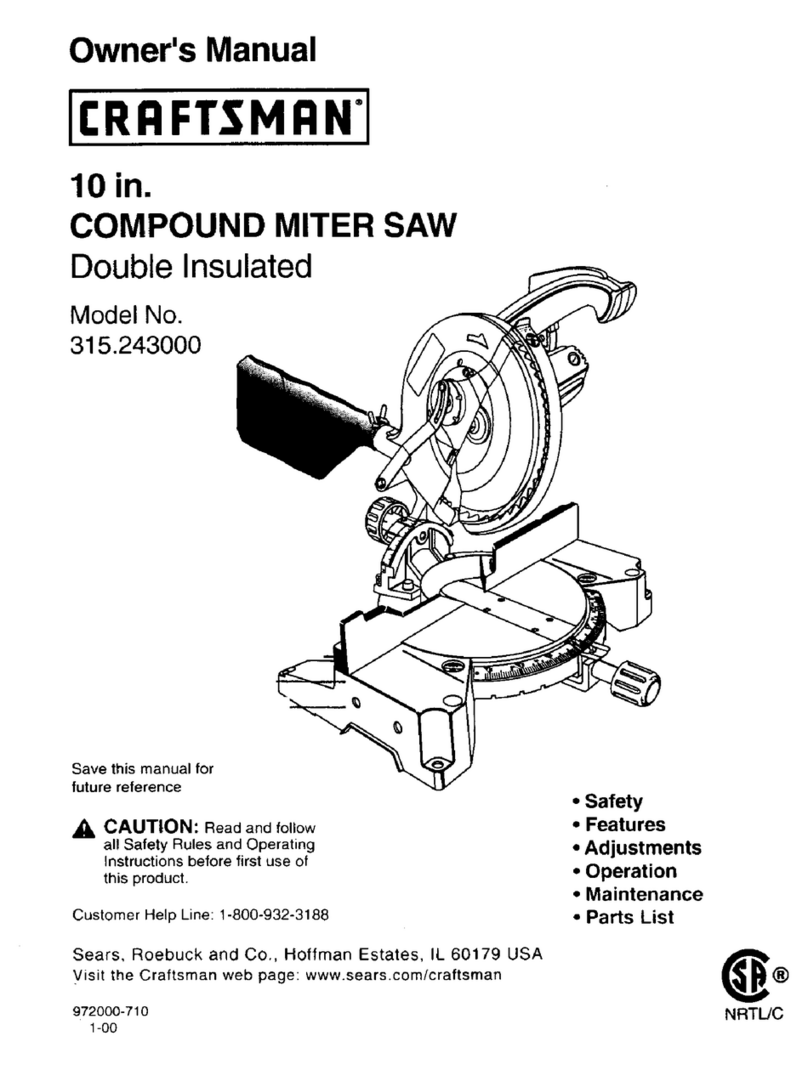M SECURE THE SAW. Firmlyboltthe saw tothe leg
stand to keepthe saw fromtipping,walking,or
sliding.
BDO NOT SET UP WORK WITH THE BLADE
SPINNING. Keep the saw poweroffuntilyou are
ready to use it.
M RIP ONLY WORKPIECES LONGER THAN THE
BLADE'S DIAMETER. Never ripa pieceof wood
that isshorterthan the diameterof the blade.
m NEVER LOWER AN UNLOCKED REVOLVING
CUI-rlNG TOOL. Alwayslock thecarriage lock
knobbefore loweringthe blade.
M SHUT OFF THE POWER TO FREE A JAMMED
GUARD. Press the switchoff beforeputtingyour
hands near the blade. Wait forthe bladeto stop,
then free the guard.
BLOCK THE SAW BEFORE MOVING IT. Secure
the radial armwith the arm lockknob. Secure the
carriage withthe carriage lockknob.
BPOSITION THE WORKPIECE WITH THE FIN-
ISHED SIDE DOWN. If theanti-kickbackpawls
catchthe woodto stop kickback,they couldmar
thetop surface or cause splintering.
M POSITION THE WORKPIECE SO NO ONE MUST
STAND IN LINE WITH THE BLADE. Ifkickbackor
climboccurs, a helper,operator, or observerin the
sawblade path couldbe seriouslyinjured.
M POSITION THE CUT SO THE WASTE PART
FALLS OFF. Never use a lengthstopon the free
end ofthe workpiece. Never applyforceto thefree
end or holditwhilethe sawblade isrotating.
WARNING: In a ripcut, holdingthe cut-offedge
behindthe blade can causethe cut edges to
pinch,riskingkickback.It couldcause the blade
toclimbover the frontedge ofthe woodand
contactyourhand.
nBEFORE STARTING EACH CUT, check thatno
play existsin the carriage. Be sure the arm, yoke
and bevel locksand clamps are tight.Verify the
blade, aUhandles, bladewashers, and bladenuts
are secure.
M BEFORE MAKING A CUT, test the upperand
lowerblade guardsfor free movement up and
down. Positionthe nose of theguard tojust clear
the workpiece.
M AVOID KICKBACK AND POSSIBLE INJURY by
preventingheeling,grabbing,and pinching.
•BEFORE CUTTING, positionand tightenthe blade
guard and anti-kickbackpawls.Test the pawls to
make sure theywould stop kickbackifitstarted.
Keep the pointssharp.
MKEEP THE SAW BLADE PATH CLEAR. Position
the saw toallow enoughroomon all sides so
neitherthe operatornora visitorstands in linewith
the sawblade.
M AVOID HEELING by adjustingthe saw bladeso it
exactlyparallelsthe fence duringrippingopera-
tions.
MAVOID GRABBING in ripmode by keepingthe
saw bladecorrectly adjusted and byfeeding the
work fromthe infeedside (oppositetheanti-
kickbackpawls).
BAVOID PINCHING by usinga rivingknife and
sharpsaw blade. Keep the work positionedfirmly
againstthefence.
BUSE IN-RIP WHENEVER POSSIBLE by position-
ingthe work sothe blade isbetween (inside)the
columnand the motor.
m NEVER ADJUST GUARD, PAWLS, OR BLADE
WITHOUT DISCONNECTING THE POWER.
Alwaysturnoffthe switchand unplugthe cord
beforefreeing a jammed blade, tighteninga loose
blade, or repositioningthe guardor pawls.
,_ CAUTION: Do notturnthe motorswitchon and
off rapidly.This can loosenthe sawblade.
nNEVER CUT MORE THAN ONE PIECE OF
WOOD AT A TIME. The feed willbe unevenand
couldcause the bladeto pick up one or more
piecesand cause seriousinjury.
BTURN OFF SAW IF A STRANGE NOISE OR
HEAVY VIBRATION OCCURS. Immediatelyturn
offthe saw, locatethe source, and correct the
problembeforeusingthe saw further.
UPOSITION THE CUT SO THE BLADE WILL NOT
EXTEND BEYOND THE EDGE OF THE TABLE.
iKEEP THE GUARDS IN PLACE AND THE WORK
SURFACE CLEAR DURING A CUT. Small objects
or woodsliverscan ricochetfrom the blade intothe
fence and backtowardthe operator. Ifthe blade
loosensslivers, removethem witha stick, notyour
hand.
• IN A RIP CUT, DO NOT LET GO OF THE WORK-
PIECE UNTIL THE CUT IS COMPLETE. When the
workpiece isfedintothe blade, pushthe workpiece
all the way pastthe blade.
7CRAFTSHQN'RADIALSAW315.220380

